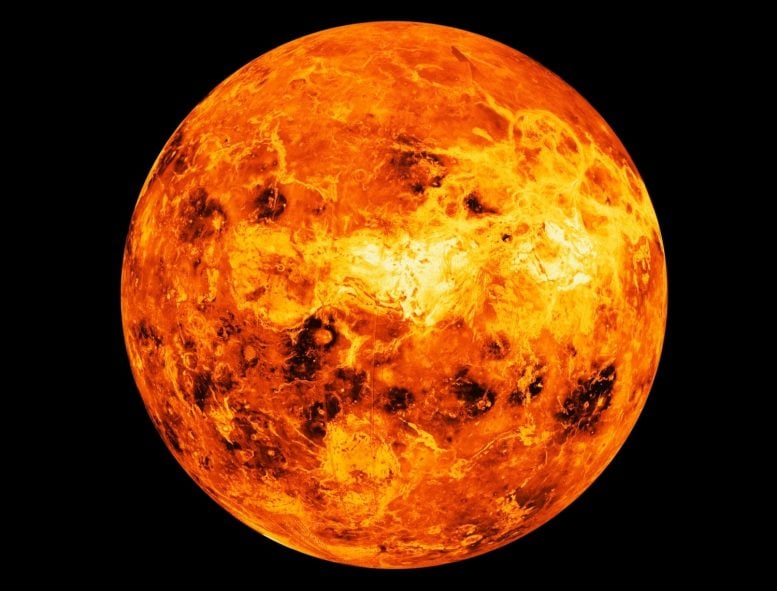Venus is the second planet from the Sun. It is named after the Roman goddess of adoration and magnificence. As the most brilliant normal article in Earth's night sky after the Moon, Venus can project shadows and can be, on uncommon events, apparent to the unaided eye in wide daylight.[17][18] Venus exists in Earth's circle, thus never seems to wander a long way from the Sun, either setting in the west soon after nightfall or ascending in the east a short time before day break. Venus circles the Sun each 224.7 Earth days.[19] With a sidereal pivot time of 243 Earth days and a synodic day length of 117 Earth days, it takes fundamentally more to turn about its hub than some other planet in the Nearby planetary group, and does as such the other way to everything except Uranus (which means the Sun ascends in the west and sets in the east).[20] Venus doesn't have any moons, a qualification it shares just with Mercury among the planets in the Sun based System.[21]
Venus is an earthbound planet and is now and then called Earth's "sister planet" in light of their comparable size, mass, nearness to the Sun, and mass piece. It is fundamentally unique in relation to Earth in different regards. It has the densest air of the four earthly planets, comprising of over 96% carbon dioxide. The air pressure at the planet's surface is around multiple times the ocean level pressing factor of Earth, or generally the pressing factor at 900 m (3,000 ft) submerged on Earth. Despite the fact that Mercury is nearer to the Sun, Venus has the most sizzling surface of any planet in the Nearby planetary group, with a mean temperature of 737 K (464 °C; 867 °F). Venus is covered by a misty layer of exceptionally intelligent billows of sulfuric corrosive, keeping its surface from being seen from space in noticeable light. It might have had water seas in the past,[22][23] however these would have disintegrated as the temperature rose because of a runaway nursery effect.[24] The water has most likely photodissociated, and the free hydrogen has been cleared into interplanetary space by the sun oriented breeze in view of the absence of a planetary attractive field.[25]
As perhaps the most splendid item in the sky, Venus has been a significant installation in human culture however long records have existed. It has been made hallowed to divine forces of numerous societies, and has been a superb motivation for journalists and artists as the "morning star" and "evening star". Venus was the main planet to have its movements plotted across the sky, as right on time as the second thousand years BC.[26]
Because of its vicinity to Earth, Venus has been an ideal objective for early interplanetary investigation. It was the primary planet past Earth visited by a shuttle (Sailor 2 of every 1962), and the first to be effectively arrived on (by Venera 7 out of 1970). Venus' thick mists render perception of its surface unimaginable in noticeable light, and the primary definite guides didn't arise until the appearance of the Magellan orbiter in 1991. Plans have been proposed for meanderers or more mind boggling missions, yet they are thwarted by Venus' antagonistic surface conditions. The chance of life on Venus has for quite some time been a subject of theory, and lately has gotten dynamic exploration.



0 Comments